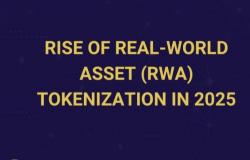
Decentralized exchanges (DEXs) have evolved significantly from early implementations, with competing architectures offering distinct trade-offs between capital efficiency, user experience, and decentralization. Understanding the technical differences between automated market makers (AMMs) and order book models illuminates DEX infrastructure trends and future development trajectories as trading volumes approach those of centralized exchanges.
Automated Market Makers (AMMs)

AMM protocols like Uniswap, Curve, and PancakeSwap revolutionized DeFi by eliminating order books in favor of mathematical liquidity pools. Liquidity providers deposit token pairs into pools earning fees from trades executed against algorithmic pricing curves. AMMs offer constant liquidity (no bid-ask spread dependency), simple user interfaces, and permissionless market creation. However, they suffer from impermanent loss (liquidity providers lose value relative to holding), capital inefficiency (requiring liquidity across entire price ranges), and slippage on larger trades. Recent innovations including concentrated liquidity (Uniswap V3) and stable curve optimizations (Curve) improve capital efficiency while maintaining AMM simplicity.
Order Book DEXs
Order book DEXs like dYdX, Serum, and Orderly Network replicate traditional exchange mechanics on-chain or through hybrid off-chain/on-chain architectures. Traders place limit orders at specific prices creating liquidity depth charts familiar to professional traders. Order books enable precise price control, zero impermanent loss for makers, and better execution on large trades. Challenges include lower liquidity in less popular pairs, complexity requiring market makers for depth, and higher computational requirements. Layer-2 scaling solutions and application-specific blockchains now enable performant on-chain order books previously impossible on Ethereum mainnet.
Hybrid and Future Models
Emerging DEX architectures combine AMM and order book benefits. Request-for-quote (RFQ) systems aggregate liquidity from professional market makers. Intent-based architectures allow users to specify desired outcomes while solvers compete to fulfill them optimally. As blockchain infrastructure matures and institutional trading migrates on-chain, DEX design will likely converge toward hybrid models offering AMM simplicity for retail alongside professional order book interfaces for sophisticated traders.





